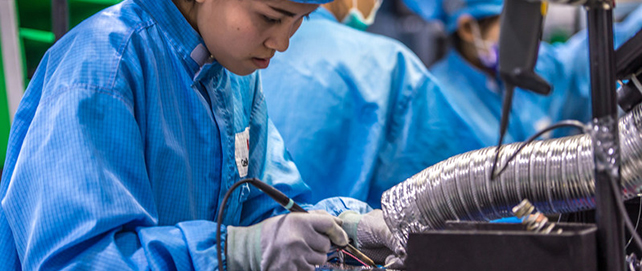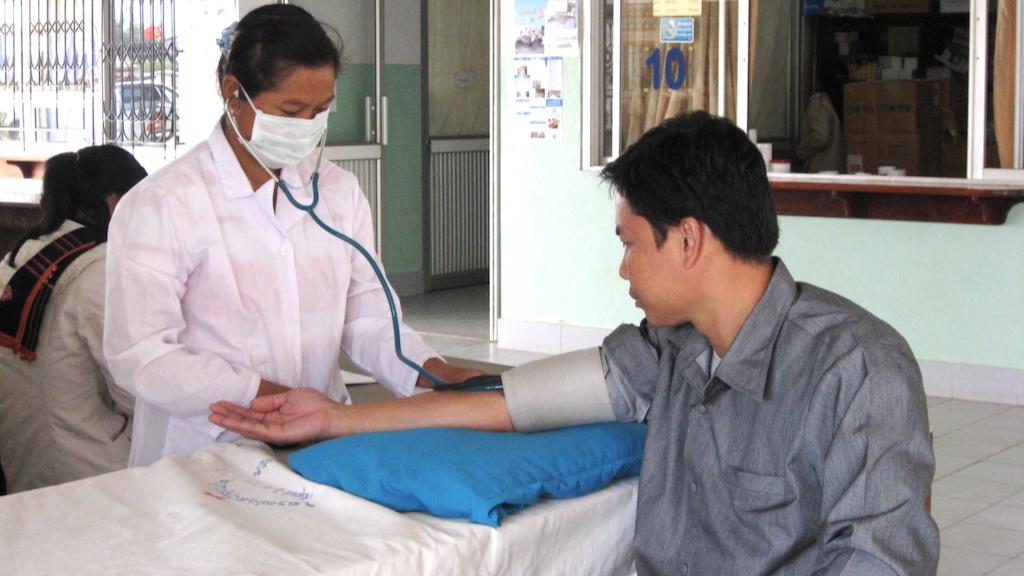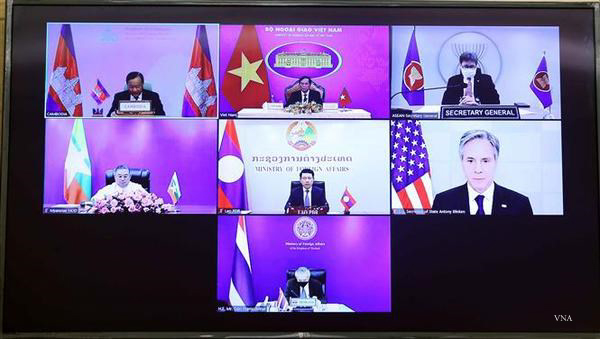Lao People's Democratic Republic






The Lao People's Democratic Republic (Lao PDR) is the only landlocked country in Southeast Asia, and it has the smallest population of the six GMS countries. But it is rich in natural resources, and has benefited from vigorous economic growth in recent years thanks to its mining, agricultural, and energy exports. The country has made impressive progress in achieving many of its Millennium Development Goals. Poverty and hunger have been greatly reduced, and education and health outcomes have improved. Exorts to diversify the economy and strengthen connectivity and collaboration with its GMS and ASEAN partners should lead to continued growth and prosperity in the coming years.
Quick Facts
| Population | 7.44 million (2022) |
| Average Annual Population Growth Rate | 1.5% (2017-2022) |
| GDP at PPP (current international dollars) | 70.66 billion (2022) |
| Annual Growth Rate of GDP (%) | 2.5 (2022) |
| GDP per capita at PPP (current international dollars) | 9,384 (2022) |
Sources: ADB Basic Statistics 2023, World Development Indicators (accessed July 2023)
Agriculture
Although commercial farming is on the rise, agriculture in the Lao PDR is still mostly subsistence. Rice—especially sticky rice—is the major crop, and is planted on nearly three-quarters of the cultivated land. Other important products include maize, coffee, sugarcane, and cassava, as well as industrial trees such as rubber and eucalyptus. The Lao PDR is looking to boost the contribution of agriculture to rural poverty reduction, and is collaborating with its GMS partners to modernize and commercialize the sector. This collaboration includes revising its policies on cross-border agricultural trade to attract investment and boost exports.
Energy
Utilizing its impressive water resources, the Lao PDR generates most of its electricity by hydropower, with 50 hydro dams in operation and more being built. The country intends to increase its electricity exports, and has plans to enhance its infrastructure for transmission to Cambodia, the PRC, Thailand, and Viet Nam. Meanwhile, the government’s priority is to ensure that all domestic households have access to electricity, and it has made steady progress in this regard—92% of the population are now connected, from 15% 20 years ago.
Environment
The Lao PDR’s landscape is dominated by rugged mountains and extensive rivers. In addition to water, the country is rich in natural resources such as minerals and forests, and has a great deal of biodiversity. In recent years, the Lao PDR has strengthened its biodiversity conservation eorts in important forest areas. Looking ahead, the country is aiming to establish better systems for controlling air and water pollution caused by agriculture and industry. With its GMS partners, the Lao PDR is also working on green freight solutions for developing more environmentally friendly transport.
Human Resource Development and Health
Human resource development as essential for achieving its socioeconomic development objectives. National priorities include increasing investments in the sector and ensuring that opportunities for human resource development are accessible to all. The Lao PDR has been working to expand and improve technical and vocational education and training, as well as higher education. The country has made considerable progress in improving the health of its people in recent decades. Maternal and child mortality have been reduced, malaria deaths are on the decline, and vaccination coverage is increasing. Health priorities include achieving universal health coverage, improving cross-border disease control, and reducing malnutrition.
Information and Communication Technology
Recognizing the importance of ICT to socioeconomic development and global connectivity, the Lao PDR has steadily improved its telecommunications infrastructure. More than 37% of the population now uses the internet through mobile broadband and fixed (wired) broadband, up from just 20% in 2015. Eorts are under way to further modernize the sector and expand its geographical reach. The targets include extending the telecommunications network to reach 91% of the villages and installing fiber-optic cables in all the country’s districts. The government is also promoting the use of ICT in schools and exploring measures to ensure internet affordability.
Tourism
The Lao PDR’s tourist attractions include World Heritage sites such as the historic town of Luang Prabang and the ancient Vat Phou Temple complex (in Champasak Province). The country’s many ecotourism opportunities and vibrant capital city, Vientiane, also entice visitors from near and far. Of the GMS countries, the Lao PDR receives the highest proportion of international visitors relative to population size. National tourism priorities include local job creation, infrastructure improvement, and environmental sustainability.
Transport
The Lao PDR is actively pursuing its goal of transitioning from a landlocked to a “land-linked” country. Significant progress has been made in improving the nation’s roads, waterways, and air-transport infrastructure in recent decades. Roads remain essential for the movement of goods and people, and the country is now benefiting from better road connectivity with its GMS neighbors. The Lao PDR recognizes the importance of e¤cient transport for achieving its Sustainable Development Goals. With support from its GMS partners, it has ambitious plans for developing an extensive railway system. The country is also looking to improve its rural road network and to climate-proof its transport infrastructure.
Transport and Trade Facilitation
As a landlocked nation, the Lao PDR depends on trade with its GMS partners. Together, the PRC, Thailand, and Viet Nam receive more than 80% of the country’s exports, including timber, electricity, agricultural products, and copper. These three countries provide an even higher proportion of the Lao PDR’s imports. The government is preparing to launch a road-user charging system, and has simplified the clearance procedures at the Viet Nam border. Efforts are also under way to reduce logistics costs for freight transport and to ensure that the transport and trade of food products is safe and disease-free.
Urban Development
In the Lao PDR, the urban areas are home to around 40% of the population. Vientiane is the only large city, with nearly a million people. The government is forging stronger linkages with towns and cities in neighboring countries by supporting the movement of goods and services along the GMS economic corridors. Its urban development goal is to create modern, livable, and environmentally friendly towns that preserve the country’s unique cultural assets.
GMS Program Officials and Contacts in Lao PDR
- Sisomboun OUNAVONG (Ms)
National Coordinator Director General Department of International Cooperation Ministry of Planning and Investment - Chanthaly CHANSOMPHENG (Mr)
Director Department of International Cooperation Ministry of Planning and Investment
Read More
Greater Mekong Subregion: 25 Years of Partnership
ADB and the Lao's Peoples Democratic Republic : Fact Sheet








